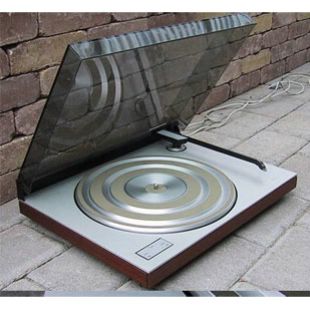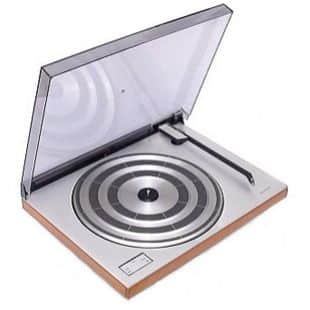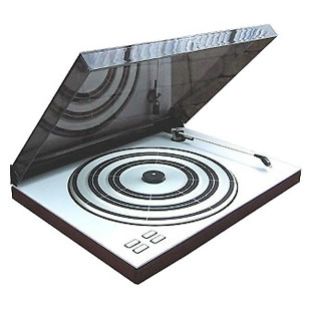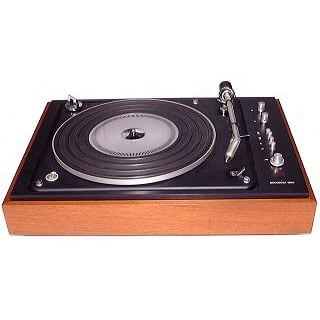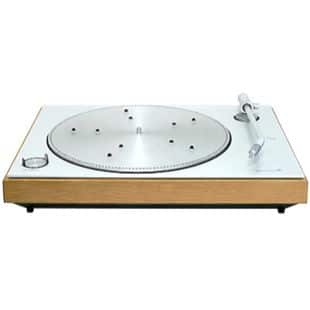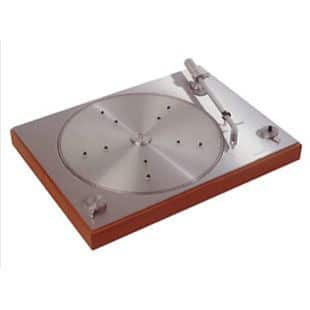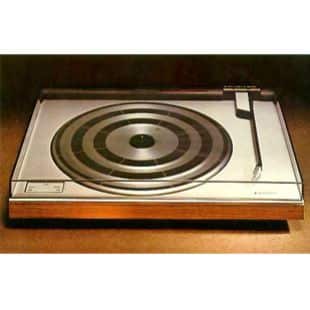BeoCenter 1800
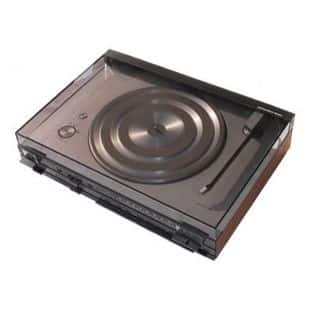
Beocenter 1800 fulfilled hi-fi standards by a wide margin. The product was also way above the average in terms of ease and operation. Experience from Beomaster 1100 and Bang & Olufsen’s integrated gramophones were combined in the special space-saving unit, which on a specification level was on a par with many separates.
The FM section had automatic frequency control (AFC), four pre-set stations and light indicators. The amplifier’s power output was 2 x 22 watts RMS with less than 0,3% distortion at full power output.
The integrated gramophone was fully automatic. The user simply chose the size of the record and pressed a button – the machine did the rest. The pickup arm was of magnesium which was extremely light. This, together with the MMC 3000, a low-mass cartridge, made this one of the very few turntables on the marker that was capable of tracking warped records. The anti-skating device also worked automatically.
The pickup arm and the turntable mechanism had a special spring suspension which made the turntable shock and vibration resistant.
Records could be played with the dust lid closed, thus protecting both the turntable and the record collection from damaging dust particles. Beocenter 1800 had connections for tape recorder, two sets of stereo speakers and a pair of headphones.
When connected to a pair of Beovox Uni-Phase passive loudspeakers, it was known as Beosystem 1800.


